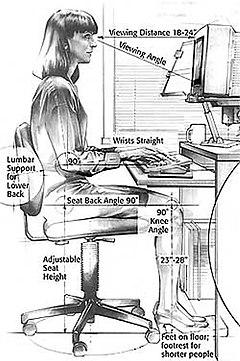Medical research rarely provides definitive answers to occupational hazards. What research provides are clues. These clues lead to additional research which, over time, can generate answers and solutions. But OHS specialists often do not have the luxury of waiting for an answer before taking some action to reduce risk and harm and often the clues are enough to take action or at least begin planning that action.
The Journal of the Society of Occupational Medicine is a treasure trove of clues. Below are some of those clues that may help OHS professionals in controlling hazards and anticipating others.
Man flu and stress
One team of researchers in Korea[1] has identified
“Males experiencing work stress in job demand, job control and social support reported an increased occurrence of the common cold at follow-up but this association was not seen in females.”
As stress is an increasingly important element of workplace health and safety, this research indicates that what some are dismissing as “man flu” may have some validity as stressor indicators. Continue reading “Occupational Medicine provides OHS clues”




